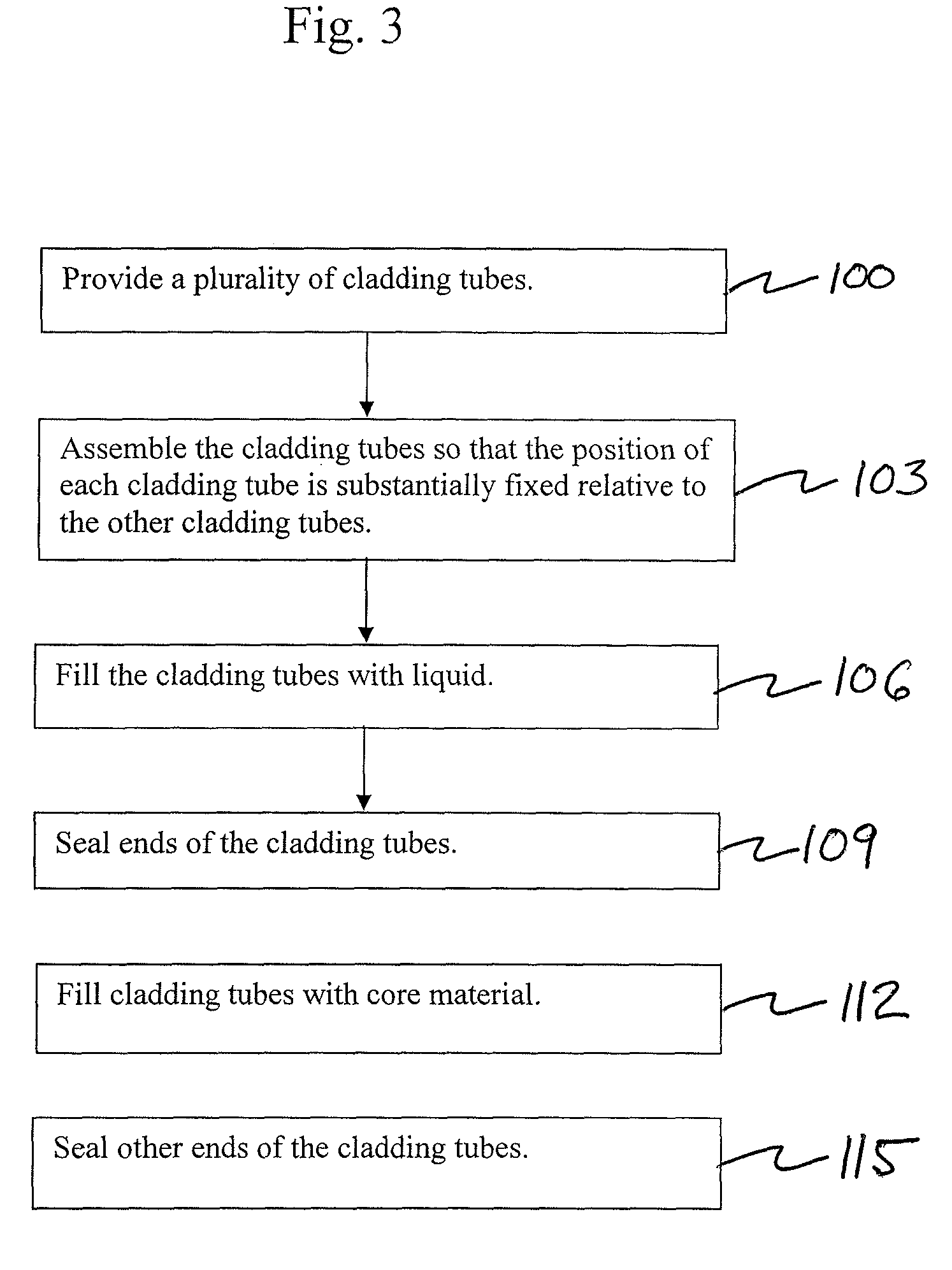Acoustic waveguide plate with nonsolid cores
a waveguide plate and non-solid core technology, applied in the field of acoustic waveguide plates with non-solid cores, can solve the problems of reducing the clarity of the information provided by the ultrasonic system, reducing and large lens size, so as to reduce the attenuation of the ultrasonic signal, reduce the size of the lens, and reduce the strength of the puls
- Summary
- Abstract
- Description
- Claims
- Application Information
AI Technical Summary
Benefits of technology
Problems solved by technology
Method used
Image
Examples
Embodiment Construction
[0032]FIGS. 1A through 1E depict an embodiment of the invention in which a plurality of substantially parallel ultrasonic waveguides 1 are held together into a single assembly. The assembly is shown in FIGS. 1A, 1B and 1C as a plate 6 of waveguides 1. The ultrasonic waveguides 1 may be fibers, and may be thought of as conduits that transmit acoustic wave energy, such as ultrasonic energy, from a first end-surface 8 of the waveguide 1 to a second end-surface 10 of the waveguide 1. Each waveguide 1 in the plate 6 may be used to convey a different ultrasonic signal from one side of the plate 6 to the other side. In order to preserve the information being transmitted by the waveguides, the relative positions of the first end-surfaces 8 of the waveguides 1 may be positioned substantially the same as the relative positions of the second end-surfaces 10 of the waveguides 1.
[0033]In an embodiment of the invention, an assembly of waveguides 1 is formed so that ultrasonic energy may be conduc...
PUM
| Property | Measurement | Unit |
|---|---|---|
| thick | aaaaa | aaaaa |
| shear-wave propagation velocity | aaaaa | aaaaa |
| length | aaaaa | aaaaa |
Abstract
Description
Claims
Application Information
 Login to View More
Login to View More - R&D
- Intellectual Property
- Life Sciences
- Materials
- Tech Scout
- Unparalleled Data Quality
- Higher Quality Content
- 60% Fewer Hallucinations
Browse by: Latest US Patents, China's latest patents, Technical Efficacy Thesaurus, Application Domain, Technology Topic, Popular Technical Reports.
© 2025 PatSnap. All rights reserved.Legal|Privacy policy|Modern Slavery Act Transparency Statement|Sitemap|About US| Contact US: help@patsnap.com



